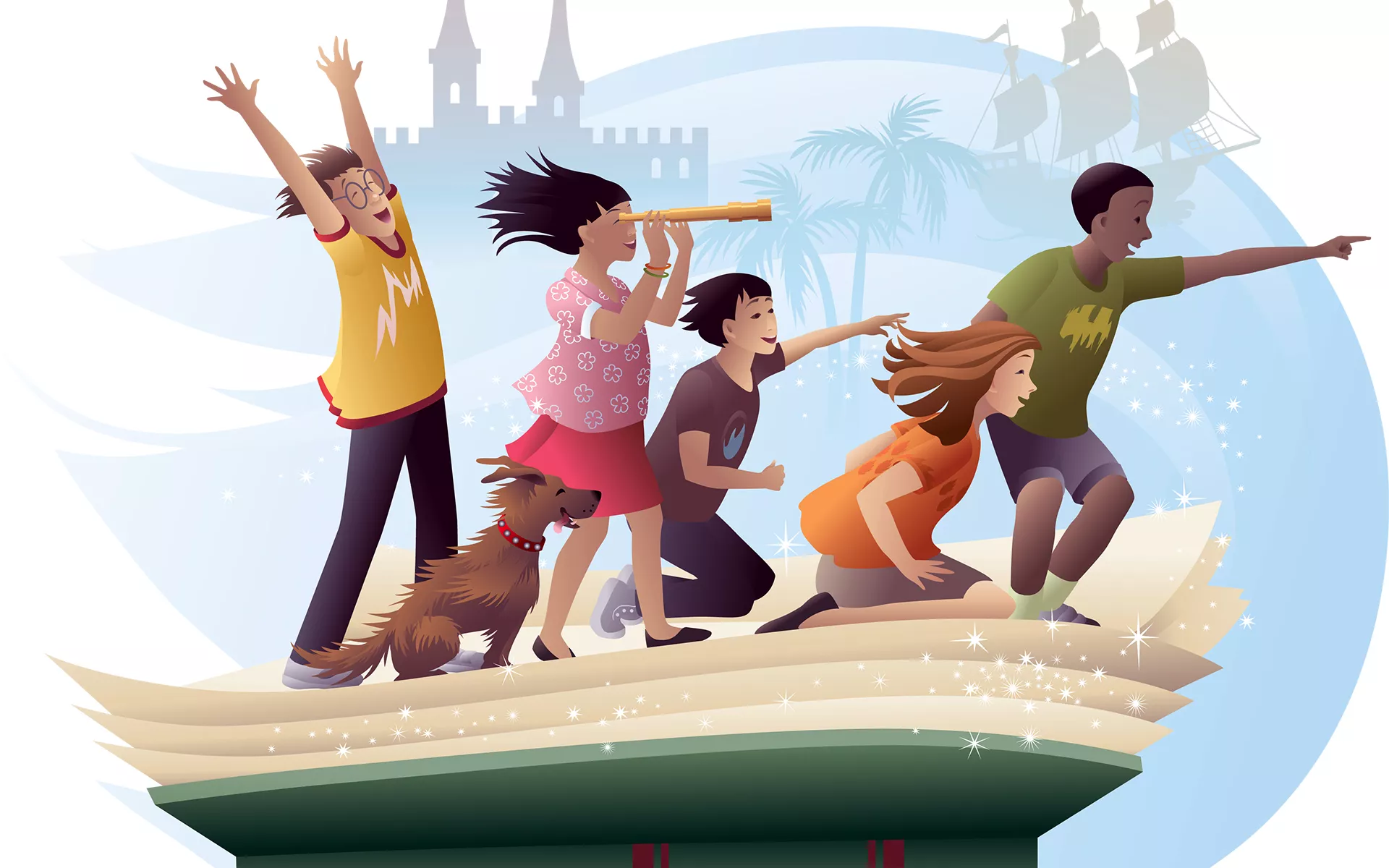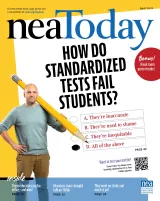Mary Pope Osborne has been writing the beloved Magic Tree House series for 30 years. This year, she released her 64th book about siblings Jack and Annie, who are whisked away in their backyard tree house to countries around the globe and beyond—like in Midnight on the Moon—as well as to different time periods throughout history. Every story is packed with adventure and fascinating facts about each place they land, with lessons on everything from science and history to geography, culture, and our common humanity.
Osborne says the biggest lesson she hopes readers take from her series is that we need to try new things to figure out who we are as unique individuals.
“It’s not that easy for us,” Osborne says. “We have to figure that out through much of our lives.”
When she was growing up, she continually took lessons in new activities.
“I tried everything,” she recalls. “Singing, swimming, tap dancing, baton twirling. I wasn’t that good at any of them, but I learned that I was a person who tried things. That’s what I hope my readers will do. … Explore, read books, find out who you are, where you fit in, what your talents are, what you want to do, what you don’t want to do. I think we all, no matter our age, can continue that journey.”
So how can you use Magic Tree House in your class? These educators share how they work the stories into their lessons:
“The Magic Tree House series is perfect for cross-curriculum lessons, since they focus on a time in history or a nonfiction topic. You can expand the students learning on these topics with the books as a starting point and dive into more advanced study. For example, with the book Good Morning, Gorillas, we go on to learn about cloud forests and do more research on the habitat and animals found in the forest. We finish the unit with a virtual tour of a zoo to see these animals. Finally, students choose one animal from the cloud forest to research and create a Google Slides presentation to share with the class.”
—Kris Fox, Pennsylvania
“We form MTH book clubs, partner reads with older students, … and [use the books] as a checkout system for students to read at home with their families and then complete enrichment activities to share within the classroom. When students have finished a book, they select an activity to learn more.”
“For The Knight at Dawn, students can research different castles and then draw a blueprint or an illustration for their own castle.”
“Pirates Past Noon, Vacation Under the Volcano, and High Tide in Hawaii, as well as a few others, tie in beautifully with our science and social studies standards about landforms and water.”
—Kari Kidman, Minnesota
“Our state has a special education initiative called Indian Education for All, or IEFA, which calls for culturally responsive teaching to reach all students, particularly our Native American students. We discuss different tribes and read a lot of texts by Native American authors and about Native American people. The MTH book Buffalo Before Breakfast furthers our knowledge of different tribes and their customs, and allows us to integrate it with other books in our social studies/reading unit on Native American tribes.”
—Aleta Carpenter, Montana
“In my special education classroom, I teach struggling readers, but they are always excited about the MTH series. I use the books to connect to curriculum and increase comprehension. For example, they’ve been learning about Morse code and other codes for science, so we are reading Tonight on the Titanic, which explains how Morse code was used on the sinking boat.”
—Brook Beorn, Kansas
“When reading The Knight at Dawn, set in medieval England, we discuss the Middle Ages, the feudal system, castles, knights, tournaments, and battles. For STEM lessons, we make marshmallow catapults, discuss the physics of a catapult, learning about potential energy and kinetic energy. What better way to test out what was discussed than flinging marshmallows at a castle? When the unit is over, each child receives a My Magic Tree House Journal to write about what they learned. The journal is based on Jack’s journal where he writes about their travel adventures through time.”
—Nicole Castronovo, New York
The Classroom Adventures Program
The Magic Tree House Classroom Adventures Program helps educators find creative ways to engage and inspire their students and still meet curriculum standards. Program resources are free and include lesson plans for 64 books with curricula in 12 subjects, including social studies, science, language arts, math, music, visual and performing arts, and more. Learn more at mthclassroomadventures.org.
Are you an affiliate?




